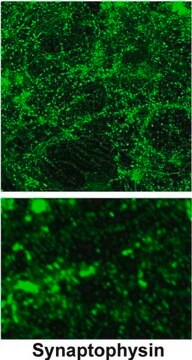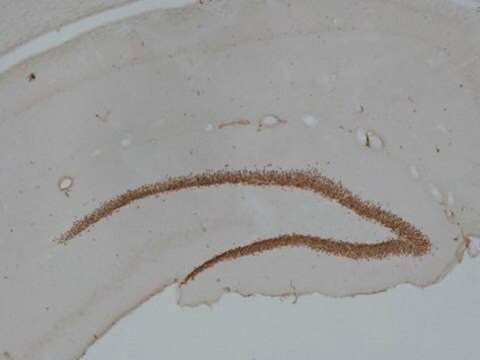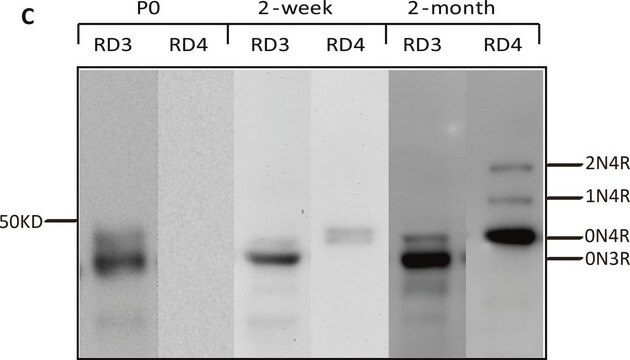MAB5258
Anti-Synaptophysin Antibody, clone SY38
clone SY38, Chemicon®, from mouse
Sinonimo/i:
synaptophysin, Synaptophysin
About This Item
Prodotti consigliati
Origine biologica
mouse
Livello qualitativo
Forma dell’anticorpo
purified immunoglobulin
Tipo di anticorpo
primary antibodies
Clone
SY38, monoclonal
Reattività contro le specie
bovine, rat, avian, fish, mouse, human
Produttore/marchio commerciale
Chemicon®
tecniche
flow cytometry: suitable
immunocytochemistry: suitable
immunohistochemistry: suitable
western blot: suitable
Isotipo
IgG1κ
N° accesso NCBI
N° accesso UniProt
Condizioni di spedizione
wet ice
modifica post-traduzionali bersaglio
unmodified
Informazioni sul gene
human ... SYP(6855)
Descrizione generale
Specificità
Immunogeno
Applicazioni
A previous lot of this antibody was used in Flow Cytometry.
Western Blot:
(Provoda, 2000) Reacts with a 38 kDa transmembrane glycoprotein
Immunohistochemistry:
For relatively cytoplasm-rich neuroendocrinic tumors a final concentration of 1 µg/mL is recommended. Concerning cytoplasm deficient tumors a concentration of 2 µg/mL should be used. Ideal frozen sections (4-5 mm) are obtained from shock-frozen tissue samples. The frozen sections are air-dried and then fixed with acetone for 5-10 min at -20°C. Excess acetone is allowed to evaporate at room temperature. Material fixed in alcohol or formalin and embedded in paraffin can also be used.
It is advantageous to block unspecific binding sites by overlaying the sections with fetal calf serum for 20-30 min at room temperature. Excess of fetal calf serum is removed by decanting before application of the anti-body solution.
Cytocentrifuge preparations of single cells or cell smears are also fixed in acetone. These preparations should but should be followed directly by antibody treatment.
Optimal working dilutions must be determined by end user.
Neuroscience
Synapse & Synaptic Biology
Qualità
Western Blot Analysis:
1:1000 dilution of this lot detected synaptophysin on 10 μg of mouse brain lysates.
Descrizione del bersaglio
Linkage
Stato fisico
Stoccaggio e stabilità
Risultati analitici
Positive Control: Pancreas tissue
Negative Control: Normal mouse serum
Rat hippocampus tissue, mouse brain lysate.
Altre note
Note legali
Esclusione di responsabilità
Non trovi il prodotto giusto?
Prova il nostro Motore di ricerca dei prodotti.
Raccomandato
Codice della classe di stoccaggio
10 - Combustible liquids
Classe di pericolosità dell'acqua (WGK)
WGK 2
Punto d’infiammabilità (°F)
Not applicable
Punto d’infiammabilità (°C)
Not applicable
Certificati d'analisi (COA)
Cerca il Certificati d'analisi (COA) digitando il numero di lotto/batch corrispondente. I numeri di lotto o di batch sono stampati sull'etichetta dei prodotti dopo la parola ‘Lotto’ o ‘Batch’.
Possiedi già questo prodotto?
I documenti relativi ai prodotti acquistati recentemente sono disponibili nell’Archivio dei documenti.
Il team dei nostri ricercatori vanta grande esperienza in tutte le aree della ricerca quali Life Science, scienza dei materiali, sintesi chimica, cromatografia, discipline analitiche, ecc..
Contatta l'Assistenza Tecnica.








